Autos & Vehicles
Unleash Your Inner Adventurer: Exploring the Open Road in the Abarth 595 Turismo Convertible
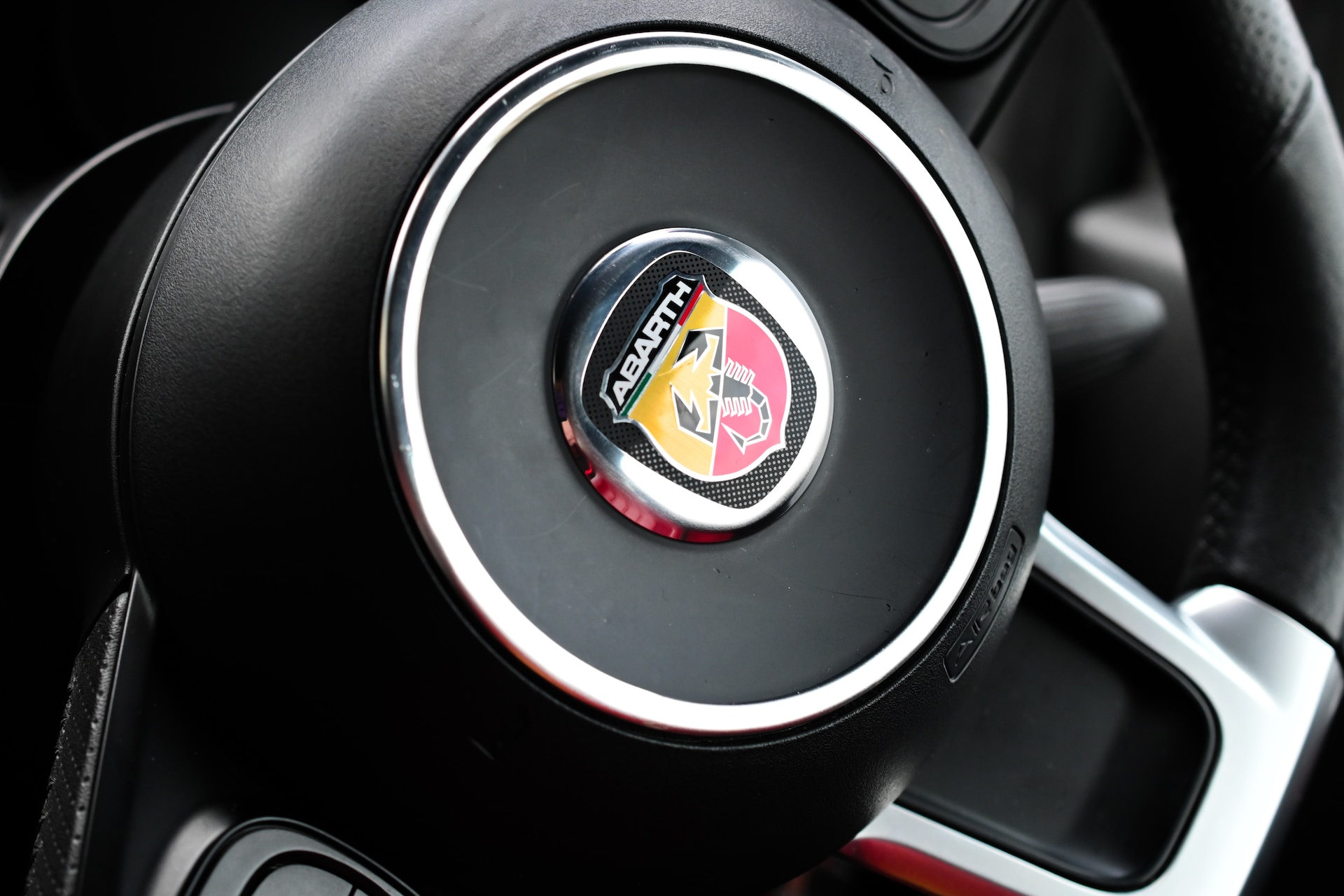
Are you ready to embark on an unforgettable adventure and feel the exhilaration of the open road? Look no further than the Abarth 595 Turismo Convertible, a car that combines style, performance, and the joy of top-down motoring. With its Italian flair and spirited driving dynamics, the Abarth 595 Turismo Convertible is the perfect companion for those seeking thrilling journeys and unforgettable experiences.
Italian Design: A Feast for the Senses
The Abarth 595 Turismo Convertible is a true masterpiece when it comes to design. Every curve, every line is meticulously crafted to create a car that is not only visually stunning but also aerodynamically efficient. From its aggressive front grille adorned with the iconic scorpion badge to its sculpted body, this convertible demands attention wherever it goes. Step inside, and you’ll be greeted by a driver-focused cockpit that exudes luxury and sportiness, featuring premium materials and impeccable craftsmanship. The Abarth 595 Turismo Convertible is a feast for the senses, designed to ignite your passion for the open road.
Top-Down Freedom: Embrace the Elements
The true allure of a convertible lies in the freedom it provides. With the Abarth 595 Turismo Convertible, you have the power to unleash your inner adventurer and embrace the elements. At the touch of a button, the soft-top roof gracefully folds away, inviting the sunshine and breeze into the cabin. Whether you’re cruising along coastal roads with the wind in your hair or driving through scenic mountain routes with the sun as your companion, the Abarth 595 Turismo Convertible offers an unparalleled sensory experience. It’s an invitation to connect with the world around you and create memories that will last a lifetime.
Performance: Thrills at Your Command
Beneath its elegant exterior, the Abarth 595 Turismo Convertible packs a punch when it comes to performance. Powered by a turbocharged 1.4-liter T-Jet engine, it delivers an impressive 160 horsepower and 170 lb-ft of torque. The engine’s responsive nature ensures instant acceleration, propelling you forward with excitement. The Abarth 595 Turismo Convertible offers precise handling and agility, thanks to its sport-tuned suspension, limited-slip differential, and electric power steering. Whether you’re conquering twisty mountain roads or enjoying a spirited drive on the open highway, the Abarth 595 Turismo Convertible will deliver thrills at every turn.
Technology: Innovation at Your Fingertips
Inside the Abarth 595 Turismo Convertible, innovation awaits. The advanced technology features are designed to enhance your driving experience and provide both convenience and entertainment. The intuitive infotainment system with a touchscreen display keeps you connected and in control, allowing you to access your favorite music, make hands-free calls, and navigate with ease. Safety is also a priority, with features such as rear parking sensors and a rearview camera to assist you in maneuvering the car with confidence. The Abarth 595 Turismo Convertible combines cutting-edge technology with the joy of driving, ensuring that every journey is both thrilling and connected.
Versatility: Everyday Practicality
While the Abarth 595 Turismo Convertible is a car built for adventure, it doesn’t compromise on practicality. With its well-designed interior and versatile storage options, you’ll have enough space to accommodate your essentials for a weekend getaway or a day trip. The rear seats provide ample room for passengers, ensuring that your loved ones can join you on your journeys. When it comes to everyday practicality, the Abarth 595 Turismo Convertible delivers, proving that you don’t have to sacrifice functionality for a thrilling driving experience.
Conclusion: Embrace the Freedom
The Abarth 595 Turismo Convertible is a car that beckons you to unleash your inner adventurer and embrace the freedom of the open road. Its captivating design, exhilarating performance, advanced technology, and everyday practicality make it a standout choice for those seeking thrilling experiences. Whether you’re exploring scenic routes, indulging in a weekend getaway, or simply enjoying the pleasure of top-down motoring, the Abarth 595 Turismo Convertible will be your perfect companion. Get ready to embark on unforgettable journeys and create memories that will last a lifetime.
Autos & Vehicles
Expert Insight: How The Car Lab Keeps Dubai’s Jeeps Off-Road Ready
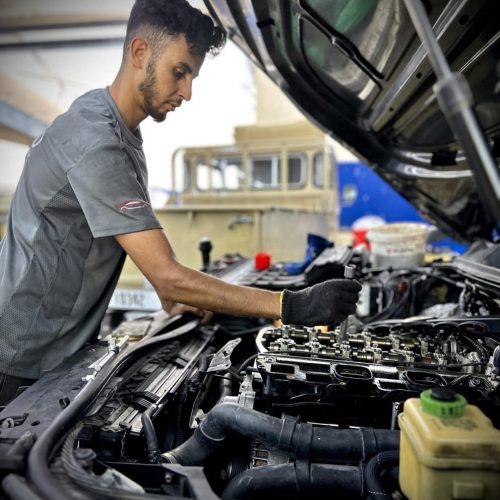
Introduction
When it comes to adventure, style, and performance, few vehicles can match the legendary Jeep. Built to conquer deserts, mountains, and city roads alike, Jeeps are made for those who crave freedom and exploration. But keeping your Jeep ready for Dubai’s tough terrains requires more than just passion—it demands professional care from the right experts. That’s where The Car Lab Auto Repair Center Dubai comes in.
As a leading name in Jeep Repair Dubai, The Car Lab specializes in maintaining, repairing, and optimizing Jeeps to keep them off-road ready and reliable in every driving condition. From routine servicing to complex engine and suspension work, our team ensures your Jeep performs at its peak—whether you’re navigating Sheikh Zayed Road or tackling the Al Qudra dunes.
Understanding Dubai’s Demands on Your Jeep
Dubai’s unique driving conditions make it one of the most challenging environments for vehicles, especially for rugged 4x4s like Jeeps. The combination of intense heat, fine desert sand, and high-speed urban driving takes a toll on every part of your vehicle.
Over time, these conditions can cause accelerated wear on essential components such as the suspension, cooling system, brakes, and drivetrain. That’s why specialized maintenance is key. At The Car Lab Auto Repair Center Dubai, we tailor our Jeep Repair Dubai services to address the unique challenges posed by the UAE’s environment, ensuring durability and top-tier performance year-round.
The Car Lab’s Expertise in Jeep Repair and Maintenance
At The Car Lab Auto Repair Center Dubai, we don’t just repair Jeeps—we understand them inside out. Our technicians are factory-trained and certified, with extensive experience handling all Jeep models, including the Wrangler, Gladiator, Grand Cherokee, and Compass.
Here’s how we keep Dubai’s Jeeps in top off-road condition:
1. Advanced Diagnostic Systems
We use state-of-the-art diagnostic equipment specifically calibrated for Jeep vehicles. This allows us to accurately detect even the smallest issues before they turn into major problems. Whether it’s an electrical fault or a mechanical glitch, our tools ensure your Jeep receives precise, efficient repairs.
2. Engine Performance and Tuning
Your Jeep’s engine is its heart—and it deserves expert care. Our specialists inspect, repair, and optimize your engine for both city and off-road performance. From oil leaks and gasket replacements to full engine rebuilds, our Jeep Repair Dubai service ensures your powertrain remains strong and smooth under any condition.
3. Transmission and Drivetrain Services
For off-roaders, a responsive transmission and reliable drivetrain are non-negotiable. We provide complete transmission servicing, fluid changes, clutch replacements, and differential repairs. Whether it’s a 4×4 system calibration or a gearbox overhaul, we keep your Jeep’s performance seamless.
4. Suspension and Steering Optimization
Dubai’s dunes can put your suspension to the test. Our experts inspect shocks, control arms, and struts to ensure perfect handling and ride comfort. We also offer performance suspension upgrades for those who love off-roading adventures, ensuring your Jeep can handle any challenge with confidence.
5. Brake System Repairs
Safety is our top priority. Our Jeep brake services include pad replacements, rotor resurfacing, and ABS diagnostics. We only use genuine Jeep components, ensuring your vehicle stops as powerfully as it moves.
6. Air Conditioning and Cooling System Repairs
Dubai’s scorching heat can stress your Jeep’s cooling system. Our technicians clean, repair, and replace radiators, compressors, and condensers to keep your Jeep cool—even in peak summer months.
7. Preventive Maintenance Packages
At The Car Lab Auto Repair Center Dubai, we offer personalized maintenance plans designed to prevent costly breakdowns. From fluid checks to filter replacements, our routine services ensure your Jeep stays reliable and ready for adventure.
Genuine Jeep Parts for Maximum Reliability
One thing that sets The Car Lab apart from other workshops is our commitment to using genuine Jeep parts. Counterfeit or low-quality parts might save money upfront but can lead to bigger problems down the road.
We source all replacement parts directly from trusted Jeep suppliers, ensuring perfect fitment, performance, and durability. Whether you need spark plugs, brake pads, or engine components, you can be confident that every part installed at The Car Lab Auto Repair Center Dubai meets Jeep’s exact specifications.
How We Keep Jeeps Off-Road Ready in Dubai
Keeping your Jeep off-road ready means more than fixing issues it’s about enhancing its endurance and readiness for the next adventure. Here’s how The Car Lab ensures your Jeep stays desert-strong:
- Comprehensive Vehicle Inspections: Before any off-road trip, we recommend a detailed inspection to check the undercarriage, tires, suspension, and fluids.
- Off-Road Customizations: Want to enhance your Jeep’s capabilities? We offer lift kits, skid plates, differential locks, and performance tuning for serious off-road enthusiasts.
- Tire and Alignment Services: Proper alignment and tire pressure are crucial for stability and grip on sandy surfaces. Our tire experts ensure your Jeep is perfectly balanced.
- Fluid Conditioning: The right engine oils, coolant mixtures, and transmission fluids make a big difference in desert performance and longevity.
We prepare your Jeep not just to survive Dubai’s deserts but to dominate them.
Why Choose The Car Lab for Jeep Repair Dubai
Choosing the right workshop for your Jeep isn’t just about convenience it’s about trust. Here’s why Jeep owners across the UAE rely on The Car Lab Auto Repair Center Dubai:
- Certified Jeep Specialists: Our technicians have specialized training for Jeep vehicles, ensuring every repair meets factory standards.
- Cutting-Edge Technology: We use advanced Jeep-specific diagnostic and repair equipment to guarantee precision and efficiency.
- Transparent Pricing: No hidden charges—just honest, upfront quotes and fair pricing for every job.
- Customer-First Approach: We treat every Jeep like our own. From free inspections to post-service follow-ups, our goal is complete customer satisfaction.
- Guaranteed Workmanship: Every service we provide is backed by warranty, so you can drive with confidence knowing your Jeep is in the best hands.
Pro Tips to Keep Your Jeep Adventure-Ready
Even with expert servicing, regular care goes a long way. Follow these quick tips to keep your Jeep running smoothly between visits:
- Clean Your Jeep Regularly: Desert sand can damage paint, undercarriage, and moving parts—regular washes protect your investment.
- Check Tire Pressure Before Off-Roading: Adjusting pressure helps maintain traction and prevents tire damage on soft sand.
- Monitor Fluids Frequently: Check oil, coolant, and transmission fluid levels more often during summer months.
- Schedule Regular Maintenance: Routine servicing at The Car Lab Auto Repair Center Dubai helps catch small issues before they escalate.
- Listen to Your Jeep: Any strange noise, vibration, or dashboard light is a sign to visit our experts for inspection.
Conclusion: Keep Your Jeep Desert-Ready with The Car Lab
When it comes to Jeep Repair Dubai, The Car Lab Auto Repair Center Dubai is the trusted name Jeep owners turn to. We combine technical excellence, genuine parts, and personalized care to keep your vehicle running like new whether you’re cruising through Downtown Dubai or exploring the red dunes of Lahbab.
Your Jeep was built for adventure—make sure it stays ready for every journey. Visit The Car Lab Auto Repair Center Dubai today and experience expert care that keeps your Jeep performing at its best.
The Car Lab Auto Repair Center Dubai
- Location: Dubai, UAE
- Call Us: +971 4 3365597
- Website: https://thecarlab.ae/
Autos & Vehicles
How to Know It’s Time for a Brake Pad Replacement in Dubai
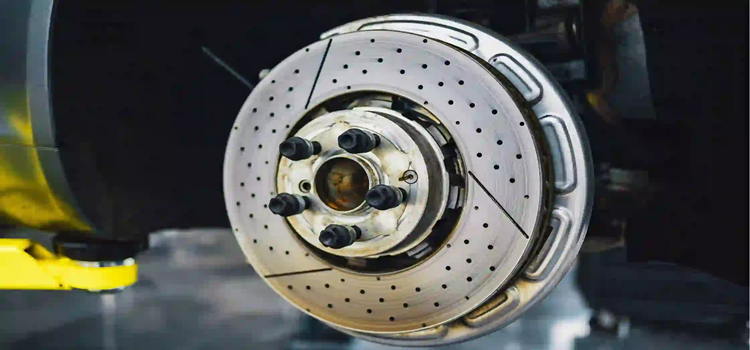
Introduction
Your car’s braking system is one of its most critical safety components. Whether you’re navigating the bustling roads of Dubai Marina or cruising down Sheikh Zayed Road, reliable brakes are essential for your safety and your car’s performance. However, like every other car part, brake pads wear down over time and need replacement.
In this detailed guide, we’ll explore the top signs that indicate it’s time for a brake pad replacement in Dubai, why timely maintenance is crucial, and how Service My Car can help ensure your vehicle stays in top condition.
Driving in Dubai can be both a thrilling and demanding experience, especially with the fast-paced traffic and the occasional high-speed highway drive. But when it comes to your vehicle’s safety, nothing is more critical than ensuring your braking system is in top condition. One of the most vital components of your car’s braking system is the brake pads.
Over time, brake pads wear down, affecting your car’s ability to stop effectively. But how do you know when it’s time for a brake pad replacement in Dubai? In this article, we’ll walk you through the common signs and important factors to help you identify when your brake pads need replacing, ensuring your car stays safe on the road.
What Do Brake Pads Do?

Before we dive into the signs that indicate it’s time to replace your brake pads, it’s essential to understand their function. Brake pads are the components that press against the brake discs (or rotors) when you apply pressure to the brake pedal. This friction slows down and stops your car. Over time, the material on the brake pads wears down, reducing their effectiveness. Replacing worn brake pads is crucial to maintaining your car’s safety and ensuring optimal braking performance.
Understanding the Role of Brake Pads
Brake pads are the heart of your car’s braking system. When you press the brake pedal, the pads press against the brake rotors, creating friction that slows the car down. Over time, this friction causes the pads to wear down, reducing their effectiveness and potentially putting you at risk.
In Dubai’s hot climate, brake pads often wear out faster due to frequent braking in heavy traffic, high-speed driving, and exposure to heat and dust. That’s why routine brake pad inspection is a vital part of car maintenance.
Top Signs You Need a Brake Pad Replacement in Dubai

Here are the most common and noticeable symptoms that signal your brake pads need attention or replacement.
1. Squeaking or Squealing Sounds
If you hear a high-pitched squealing or squeaking noise when pressing the brake pedal, it’s one of the first signs your brake pads are wearing out.
Most brake pads come with a built-in wear indicator—a small metal shim that produces this sound when the pad material becomes too thin.
In Dubai’s environment, where sand and dust can also contribute to noise, it’s important to get a professional inspection at Service My Car to confirm if the sound is due to worn-out pads or debris.
2. Grinding Noise While Braking
A grinding or growling noise usually means your brake pads are completely worn out. When this happens, the metal backing of the pads rubs against the rotor, causing damage that could lead to expensive repairs.
Driving with metal-on-metal contact can significantly reduce braking power, putting your safety at risk. If you experience this symptom, book a brake inspection at Service My Car immediately to avoid further damage.
3. Reduced Braking Performance
If your car takes longer than usual to stop or the brake pedal feels softer or less responsive, it could indicate worn brake pads. In Dubai’s busy traffic, even a slight delay in braking can lead to dangerous situations.
Don’t wait until it’s too late. Service My Car provides expert brake system checks to ensure everything functions as it should.
4. Brake Warning Light
Modern vehicles are equipped with dashboard warning lights that alert you when your brake pads are getting low. This light may appear when the sensors detect excessive wear.
If your brake warning light turns on, it’s best to have it checked immediately. Ignoring it can lead to further complications in the braking system.
5. Vibrations When Braking
Feeling a vibration or pulsation in the brake pedal when applying brakes can mean the rotors are uneven or the pads are worn unevenly. This issue is common in Dubai due to high temperatures that cause metal components to expand and contract frequently.
A professional brake technician at Service My Car can inspect and resurface or replace your rotors and pads as needed.
6. Pulling to One Side
If your vehicle pulls to one side when you brake, it could be due to uneven wear on the brake pads or an issue with the calipers. This can make driving unsafe, especially at high speeds.
At Service My Car, technicians perform a complete brake system diagnosis to identify the cause and fix it quickly.
7. Thin Brake Pads
You can also visually inspect your brake pads through the wheel spokes. If the pad material appears less than 6mm thick, it’s time to replace them.
Regular inspection ensures you don’t wait until the pads are completely worn, preventing damage to the rotors and ensuring smooth braking performance.
8. Burning Smell After Braking
A sharp burning odor after hard braking could mean your brakes are overheating. This might happen during long downhill drives or after continuous braking in heavy Dubai traffic.
If you notice this smell, safely pull over and allow your brakes to cool. Then, get them checked at Service My Car to make sure no components were damaged due to overheating.
Why Timely Brake Pad Replacement Matters

Replacing your brake pads on time isn’t just about comfort—it’s about safety and saving money in the long run. Here’s why:
- Enhanced Safety: Worn brake pads increase stopping distance and reduce control, especially on Dubai’s busy highways.
- Lower Repair Costs: Ignoring brake pad wear can damage rotors, calipers, and other parts—costing far more to repair.
- Better Performance: Fresh brake pads provide smoother and more efficient braking.
- Increased Longevity: Regular maintenance keeps your entire braking system in optimal condition.
- Peace of Mind: With professional servicing from Service My Car, you can drive confidently knowing your brakes are reliable.
How Long Do Brake Pads Last in Dubai?

Typically, brake pads last between 30,000 to 70,000 kilometers, depending on your driving habits, vehicle type, and local conditions.
However, in Dubai’s stop-and-go traffic, high temperatures, and sandy roads, brake pads might wear faster. Regular servicing every 10,000–15,000 km is recommended to keep track of their condition.
At Service My Car, skilled technicians use advanced diagnostic tools to assess brake wear and suggest replacement only when necessary.
Why Choose Service My Car for Brake Pad Replacement in Dubai?

When it comes to maintaining your car’s braking system, you need professionals you can trust. Service My Car is Dubai’s most reliable and convenient car service provider, offering premium-quality brake pad replacement and complete brake system inspection.
Here’s what sets them apart:
- Certified Technicians: Skilled experts who know every detail of your car’s brake system.
- High-Quality Parts: OEM or equivalent brake pads for long-lasting performance.
- Transparent Pricing: No hidden fees just honest service.
- Free Pickup and Delivery: Enjoy doorstep convenience anywhere in Dubai.
- Comprehensive Inspection: Every service includes a detailed brake system health check.
Whether you drive a compact city car, a luxury SUV, or a high-performance vehicle, Service My Car ensures your braking system performs flawlessly.
Thank you for taking the time to read this blog. If you’re searching for Gmc service center, then visiting Service My Car recognized as the best and most trusted car workshop in the city.
Conclusion
Your car’s brakes are too important to neglect. In a city like Dubai, where driving conditions can be intense, recognizing the signs of worn brake pads early can save you from accidents and costly repairs.
If you notice squealing noises, reduced braking power, or vibrations, don’t delay schedule a brake pad replacement in Dubai with Service My Car today. Their expert technicians, premium parts, and hassle-free service ensure your car stays safe, reliable, and road-ready at all times.
Stay safe, stay smart, and always trust Service My Car for all your car maintenance needs.
FAQs About Brake Pad Replacement in Dubai
Q1 How often should I replace my brake pads in Dubai?
It’s recommended to replace brake pads every 30,000–70,000 kilometers, but this varies based on your driving style and Dubai’s conditions. Regular inspections at Service My Car help determine the right time.
Q2 How long does a brake pad replacement take?
A professional brake pad replacement typically takes between 1 to 2 hours at Service My Car, depending on the car model and brake type.
Q3 Can I drive with worn-out brake pads?
You can, but it’s unsafe. Driving with worn pads increases stopping distance and can damage rotors, leading to costly repairs.
Q4 What type of brake pads are best for Dubai’s conditions?
Ceramic or semi-metallic pads are ideal for Dubai’s hot climate. They offer better heat resistance and durability.
Q5 Does Service My Car offer free brake inspections?
Yes, Service My Car offers free brake inspections along with pickup and delivery services for maximum convenience.
Q6 How do I book a brake pad replacement with Service My Car?
You can easily book through the Service My Car website or mobile app. Just select your car, choose “Brake Pad Replacement,” and schedule a pickup at your preferred time.
Autos & Vehicles
Car Shipping New York: Reliable Vehicle Transport Services
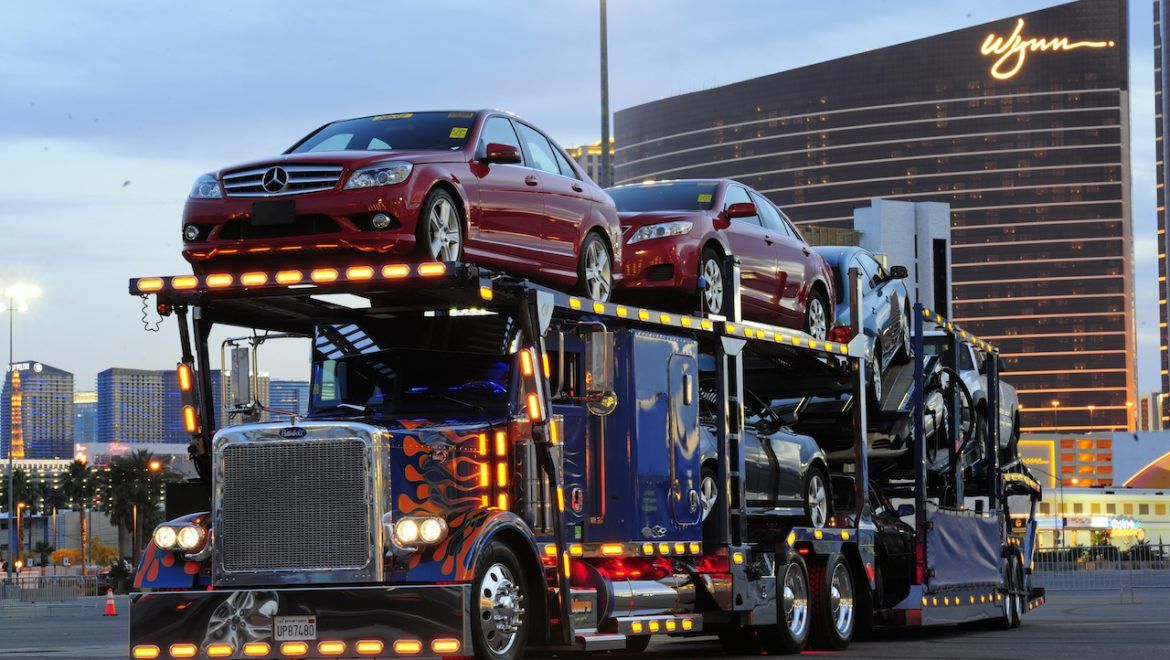
Introduction
Whether you’re moving to New York, buying a car from out of state, or simply need to transport your vehicle for another reason, choosing the right car shipping service is essential. New York, being a hub for business, tourism, and a diverse population, sees many people needing reliable vehicle transport options. Whether you are in New York City, the Hudson Valley, or somewhere in between, there are various car shipping companies offering solutions to meet your needs.
In this article, we’ll dive deep into the world of car shipping in New York, providing you with valuable insights into the process, the best companies to consider, and how to choose the right service for your vehicle’s journey.
Why Choose Car Shipping in New York?
Car shipping in New York is a highly sought-after service, especially given the state’s dense population and busy transport network. There are several reasons why people opt to ship their cars instead of driving them.
- Time-Saving: Shipping your car can save you time, especially if you are moving a long distance or need to transport multiple vehicles. Instead of spending days on the road, you can have your car delivered while you handle other tasks.
- Convenience: Car shipping services offer door-to-door delivery, meaning they pick up your vehicle at one location and deliver it directly to your destination. This removes the hassle of driving long distances or worrying about finding parking along the way.
- Safety: Long-distance driving, especially through busy highways or mountainous terrains, can be tiring and stressful. With a professional car transport company, you avoid the risk of accidents or wear and tear on your vehicle.
- Moving to a New City: If you are relocating to New York for work or personal reasons, car shipping is a great way to ensure your car gets to your new home safely without the need for a cross-country road trip.
Types of Car Shipping Services Available in New York
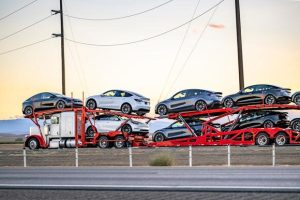
Image by: Yandex.com
Car shipping services come in a variety of options, and it’s important to understand the differences to choose the best one for your needs.
1. Open-Air Shipping
Open-air shipping is one of the most common and cost-effective ways to transport a vehicle. Your car will be loaded onto an open trailer, exposed to the elements during its journey. While this option is cheaper, your car is more vulnerable to weather conditions and debris along the road.
Pros:
- Affordable
- Widely available
- Fast delivery
Cons:
- Exposure to the weather and road debris
- Slightly higher risk of damage
2. Enclosed Shipping
Enclosed shipping involves transporting your car inside a fully enclosed trailer. This method provides extra protection for your vehicle, making it ideal for luxury, vintage, or exotic cars that require special care.
Pros:
- Maximum protection from weather and road debris
- Better suited for high-value or sensitive vehicles
Cons:
- More expensive than open-air shipping
- Limited availability
3. Door-to-Door Shipping
This option allows you to have your car picked up directly from your home or office and delivered to your destination. It’s one of the most convenient services, especially for people who are too busy to drive their car to a shipping terminal.
Pros:
- Maximum convenience
- No need to transport the car to a terminal
Cons:
- Slightly more expensive
- May not be available in remote or difficult-to-reach locations
4. Terminal-to-Terminal Shipping
In terminal-to-terminal shipping, you drop off your car at a designated terminal, and it is picked up from another terminal at the destination. This method is more affordable, but it requires you to be flexible with pick-up and drop-off locations.
Pros:
- More affordable
- Suitable for those who can drive their car to a terminal
Cons:
- Less convenient
- May require extra effort to reach a terminal
How Much Does Car Shipping in New York Cost?
The cost of shipping a car in New York varies depending on several factors, including the distance, the type of vehicle, and the service chosen. Here are some general pricing factors to keep in mind:
- Distance: The further the distance between pick-up and drop-off, the higher the cost. Shipping within New York itself will typically cost less than transporting a vehicle across the country.
- Vehicle Type: Larger vehicles such as SUVs, trucks, or luxury cars may cost more to ship compared to standard sedans due to their size and weight.
- Service Type: Enclosed shipping services are more expensive than open-air shipping. Similarly, door-to-door service generally costs more than terminal-to-terminal shipping.
- Time of Year: The time of year can affect car shipping costs. Shipping rates may be higher during peak seasons, such as summer, when demand is higher.
- Additional Fees: Some car shipping companies may charge extra fees for things like insurance, expedited shipping, or delivery to hard-to-reach areas.
On average, you can expect to pay between $600 and $1,200 for car shipping in New York, depending on the specifics of your shipment.
How to Choose the Right Car Shipping Company in New York
With so many car shipping options available, it’s important to do your research to find the right company for your needs. Here are some key factors to consider when choosing a car shipping service in New York:
1. Reputation and Reviews
Look for car shipping companies that have a solid reputation and positive customer reviews. Companies that have been in the business for years and have a track record of customer satisfaction are generally a safer bet.
2. Insurance and Liability
Make sure the company offers adequate insurance to cover any potential damages during transit. It’s essential to confirm that the insurance policy includes liability coverage for any unforeseen incidents.
3. Licensing and Certification
Ensure the company is licensed and registered with the Department of Transportation (DOT). This ensures that they are operating legally and adhere to federal regulations.
4. Pricing Transparency
Be wary of companies that don’t provide clear and upfront pricing. Reliable car shipping companies will offer a detailed quote with all costs included, without hidden fees.
5. Customer Support
The availability of reliable customer service is critical, especially if you have questions or concerns during the shipping process. Choose a company with responsive support teams that are easy to reach.
The Car Shipping Process: What to Expect
Once you’ve selected your car shipping provider, it’s important to understand the typical steps involved in the process:
- Booking the Shipment: Contact the company to get a quote and book your car shipping service. Provide details such as your pick-up and drop-off locations, vehicle type, and preferred shipping method.
- Pick-Up: On the scheduled date, the shipping company will arrange to pick up your car. Ensure that your car is clean and free from personal items to avoid any damage or complications during transport.
- Transportation: Your vehicle will be securely loaded onto the shipping vehicle and transported to your destination. Depending on your chosen service, this could take anywhere from a few days to over a week.
- Delivery: Upon arrival, the company will deliver your car to the agreed location. Inspect the vehicle carefully for any damage, and ensure that the condition of your car is documented.
Conclusion
Choosing the right car shipping service is a crucial step in ensuring that your vehicle arrives safely and on time. With a wide range of reliable providers in New York offering various shipping options, you can find a solution that meets your needs and budget. Whether you’re moving, buying a car out of state, or simply need to transport your vehicle, car shipping can save you time, money, and hassle.
By understanding the process, considering your options, and working with reputable companies, you can enjoy a smooth and stress-free experience with car shipping in New York.
-
Business2 years ago
Cybersecurity Consulting Company SequelNet Provides Critical IT Support Services to Medical Billing Firm, Medical Optimum
-
Business2 years ago
Team Communication Software Transforms Operations at Finance Innovate
-
Business2 years ago
Project Management Tool Transforms Long Island Business
-
Business2 years ago
How Alleviate Poverty Utilized IPPBX’s All-in-One Solution to Transform Lives in New York City
-
health2 years ago
Breast Cancer: The Imperative Role of Mammograms in Screening and Early Detection
-
Sports2 years ago
Unstoppable Collaboration: D.C.’s Citi Open and Silicon Valley Classic Unite to Propel Women’s Tennis to New Heights
-
Art /Entertainment3 years ago
Embracing Renewal: Sizdabedar Celebrations Unite Iranians in New York’s Eisenhower Park
-
Finance3 years ago
The Benefits of Starting a Side Hustle for Financial Freedom
































